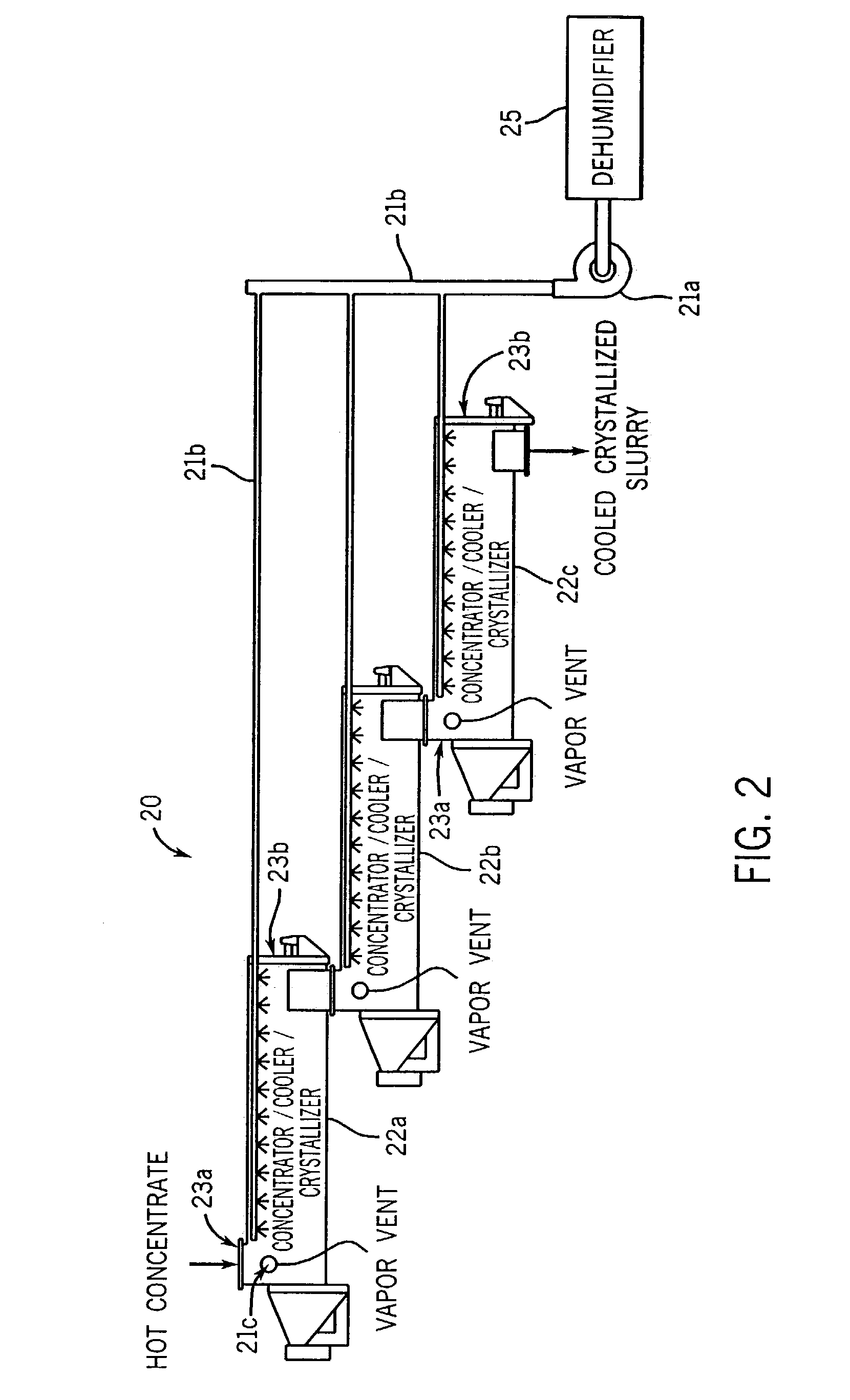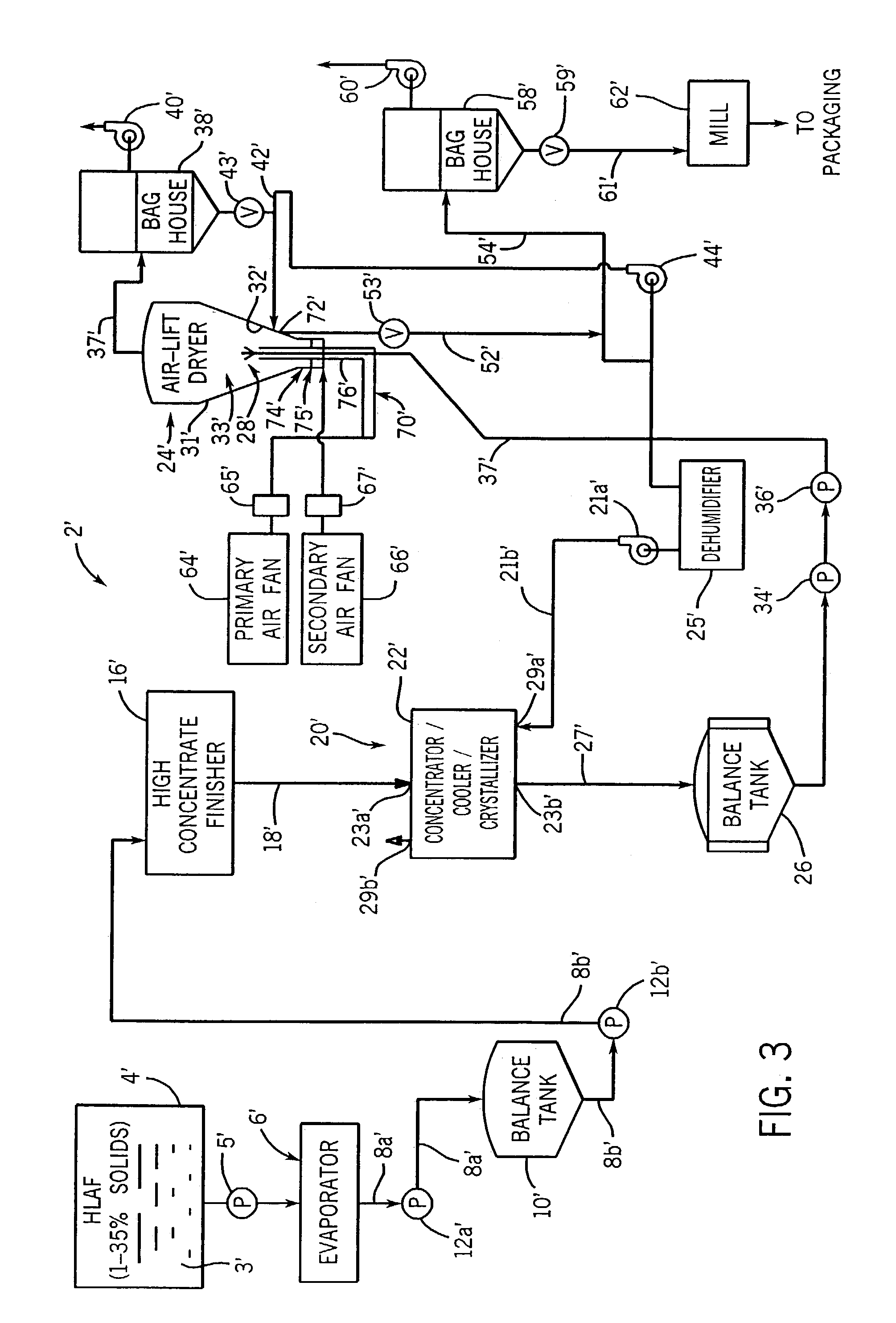Process for drying high-lactose aqueous fluids
- Summary
- Abstract
- Description
- Claims
- Application Information
AI Technical Summary
Benefits of technology
Problems solved by technology
Method used
Image
Examples
Embodiment Construction
[0034]The present invention provides processes and systems for concentrating a high-lactose aqueous fluid (HLAF); crystallizing lactose within the HLAF and finally drying the HLAF. The HLAF contains solids that are generally retained in an aqueous fluid following commercial milk or milk by-product processing, such as those fluids resulting from deproteination of milk fluids as, for instance, through a process or processes for the production of cheese and / or casein, followed for instance by the production of whey protein concentrates and / or whey protein isolates and the like. The present invention also includes systems with which such processes can be completed and crystalline lactose formed in accordance with such processes.
[0035]Referring now to the drawings and specifically to FIG. 1, a system 2 is shown for completing a process of concentrating, crystallizing and drying high-lactose aqueous fluids (HLAF) in accordance with the general principles of the present invention. The proc...
PUM
| Property | Measurement | Unit |
|---|---|---|
| Fraction | aaaaa | aaaaa |
| Fraction | aaaaa | aaaaa |
| Fraction | aaaaa | aaaaa |
Abstract
Description
Claims
Application Information
 Login to View More
Login to View More - R&D
- Intellectual Property
- Life Sciences
- Materials
- Tech Scout
- Unparalleled Data Quality
- Higher Quality Content
- 60% Fewer Hallucinations
Browse by: Latest US Patents, China's latest patents, Technical Efficacy Thesaurus, Application Domain, Technology Topic, Popular Technical Reports.
© 2025 PatSnap. All rights reserved.Legal|Privacy policy|Modern Slavery Act Transparency Statement|Sitemap|About US| Contact US: help@patsnap.com



